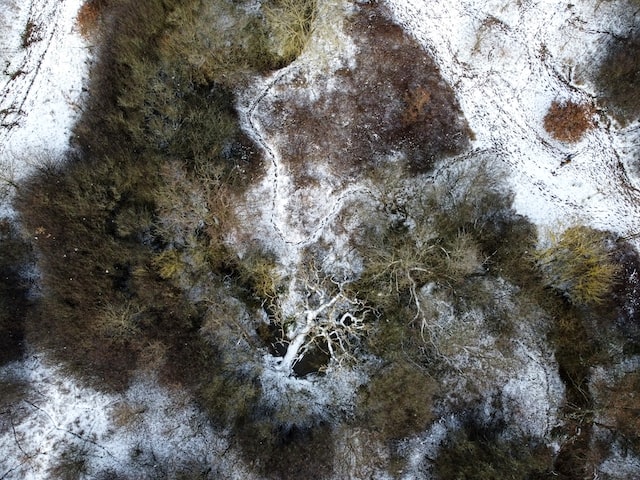
Winter is the time of rest.
Trees shed their leaves, animals hibernate, and perennial plants lie in wait for spring‘s sunshine and showers.
The winter season, however, is not as sleepy and stagnant as it may seem. In Washington DC—and many places around the world—chilled temperatures and snowfall provide the perfect conditions for one extra pesky life form: mold. How do winter conditions cause mold, and how can you keep your DC home in the clear? in this Moldgone blog, we’re offering answers.
Wait, Doesn’t the Cold Kill Mold?
Generally speaking, cold is not conducive to life. But mold—and the rest of the fungi kingdom—don’t play by our rules.
While most mold varieties will only grow and thrive at a certain temperature threshold—many are cozy at around 60-80 degrees Fahrenheit—all are able to survive sub-freezing temperatures. Those that can’t actively spread in winter lie dormant until the seasons change.
Scenario 1: “Sintering” Snow Can Create Pockets of Growth in Your DC Home

Even though many mold varieties can grow during winter, the conditions need to be just right. After all, mold can’t grow without moisture, heat, and the right nutrients. All are far less available during the winter months.
One way this happens has to do with snow “sintering.” Usually, shortly after a snowfall, the once-fluffy snow develops a thin ice crust when water moving beneath the snow’s surface meets the cool winter air.
Once this process is complete, an insulated pocket of warmer air forms between the snow’s crust and the ground. If temps drop, the snow’s surface will degrade and create the perfect conditions for mold spores to grow. Newly wetted drywall will meet the warm air traveling beneath the snow, which can spur growth.
From there, it takes only a few days for fungal blooms to grow.
Scenario 2: Snowfall Melts Can Flood Your DC Home’s Foundation

The above scenario is not the only one DC homeowners should look out for. We frequently see mold infestations that occur after a significant snowfall.
As it happens, snow tends to pile up the longer temps stay below freezing. Once temps rise again, the snow melts, which causes our problem. If enough snow has piled up, your home’s foundation can be flooded. If conditions are right, mold spores can start to grow in your basement, where they can spread further.
How to Prevent a Winter Mold Growth in DC

Sudden mold infestations may sound scary, but there’s a lot you can do to prevent a winter infestation. We recommend concerned homeowners take the following steps:
- Clear all snowfall within two feet of your home’s exterior
- Keep humidity below 50 percent at all times
- Keep tabs on pipe and plumbing leaks by making frequent inspections, particularly during the season’s coldest days
- Use mold-killing cleaners in areas of your basement where moisture collects
- Remove any rugs and carpeting around areas that tend to get wet, like windows and sinks
Mold Prevention is a Year-Round Concern
Your idea of a cozy and snuggly DC winter may not involve regular mold spore contamination checks, but you don’t have to be very vigilant to prevent growth.
Simply by being aware of the conditions that lead to mold—and the areas of your home where they might grow—you can prevent most winter mold infestations in your DC.
Why MoldGone
At MoldGone, we offer FREE mold inspection. Our mold removal and mold remediation services are available at reasonable prices.
Call us today at 240-970-6533 or Click here to schedule your appointment.
Meta: In Washington DC, cold and snowy winters can provide the perfect conditions for mold. Here’s how it works and how you can prevent spore growth.




Recent Comments